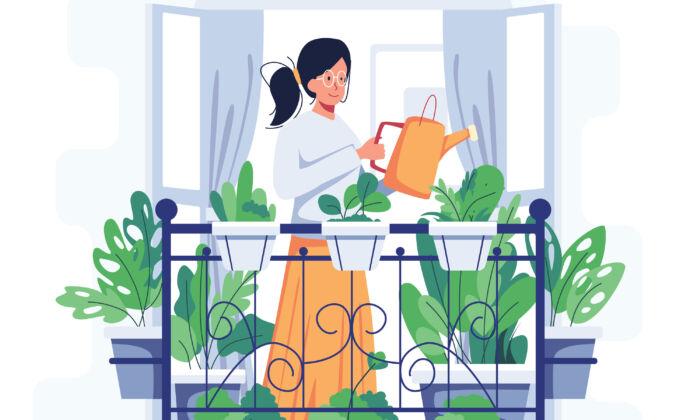Keep Them Happy and Hydrated
Houseplants may require more frequent watering in the summer months, as the heat causes moisture to evaporate more quickly, and plants go into their growing phase. Succulents are the exception, as they can go long periods of time without water and prefer a drier environment.“Water your houseplants in the morning, as this will help them soak up the water easily and rapidly,” advises Arthur Reeves, founder of Garden Troop. “Doing it later than 9 a.m. will cause more water to evaporate due to wind or heat.”
Bring on the Sunbathing—but Don’t Let Them Burn
Some houseplants, like succulents and tropical species, enjoy being under full sun, so moving them closer to a window can be beneficial. However, many plants can quickly become dehydrated and suffer leaf scorching, so be sure to check on your specific plant’s light requirements and adjust accordingly.“For summer-blooming houseplants and succulents, exposure to sunlight encourages flowering and enhances a plant’s unique colors,” says Ngo. “But we recommend keeping direct sunlight, especially in the afternoon, at a minimum, as most succulents have delicate leaves that can burn.”
Go Easy on the Fertilizer
Most houseplants don’t need much fertilizer, but an occasional dose can be beneficial. Reeves recommends a liquid fertilizer “as it can provide nutrients to your soil that will be absorbed by your plants right away. Always water your soil after applying, as this will soften the soil and make it easier for the fertilizer to be incorporated.”
Care for the Air
Most houseplants thrive in humid conditions. “If you live in a region with a humid summer climate, there’s usually no need for extra moisture. If not, you should purchase a humidifier,” suggests Bryan McKenzie, co-founder of Bumper Crop Times. “To choose the right one, consider the number of plants and room sizes. If you have a small humidifier, you can create small plant islands around the device.”Ronnie Collins, botanist and founder of the Electro Garden Tools blog, recommends an optimal combination of a humidifier and an air conditioner “to keep plants cool but humid. However, houseplants should be kept away from direct cold airflow.”
Simply opening windows or doors to improve your home’s air circulation can also make for happier plants—and a happier you, too!






